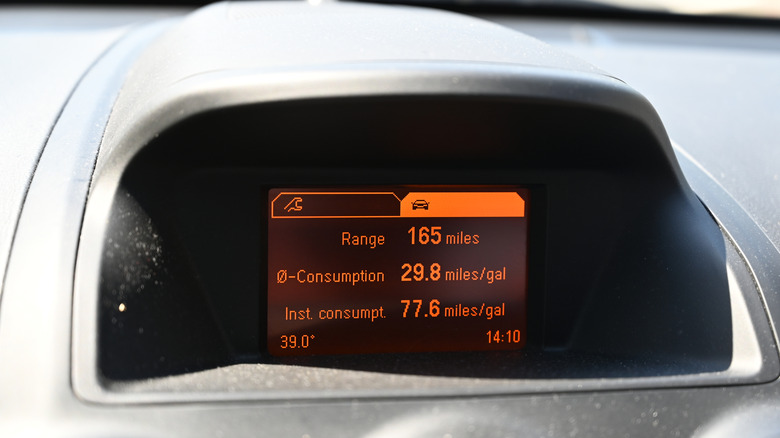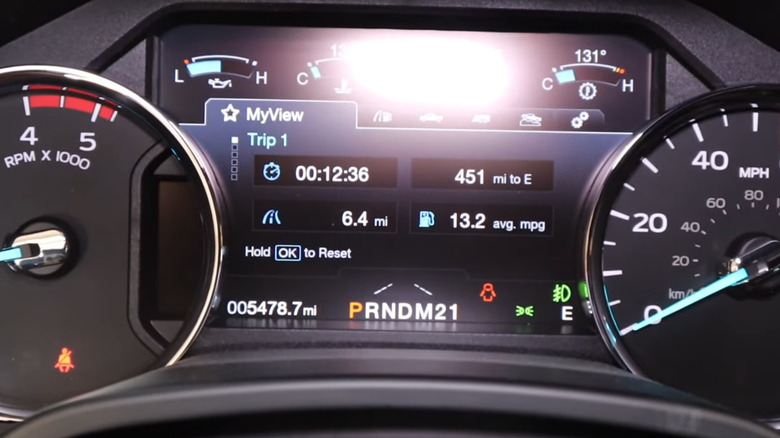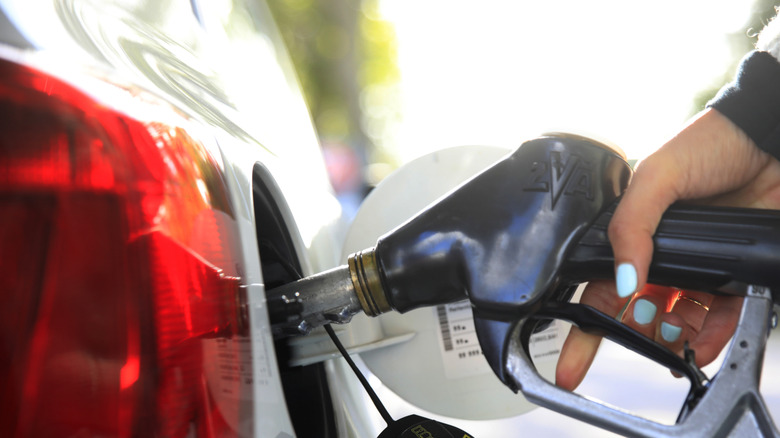How Do Modern Cars Compute MPG In Real Time?
Have you ever paid attention to your car's real-time fuel economy readout? These instant mpg displays are an important tool for drivers who want to make their cars cars the most fuel efficient they can be and save money at the pump. But have you ever wondered how your car actually calculates miles per gallon in real time? It's not magic: It's math, software, and a whole lot of sensor data working together under the hood.
Unlike the EPA's fuel economy estimates — those city and highway mpg numbers you see on the window sticker at the dealership — instant mpg displays give feedback that reflects how you're driving right now. Tap the accelerator hard? Watch the mpg plummet. Coast downhill? Suddenly you're getting incredible fuel economy. This readout is based on real-time data from your car's internal sensors, including fuel flow rate, engine speed, throttle position, and manifold pressure. This information is fed into the vehicle's onboard computer, which crunches the numbers and displays your current miles per gallon. But is the number actually reliable?
Your car calculates mpg with sensors and software
It's all thanks to the engine control module, which continuously monitors how much fuel is being injected into the engine and how fast the car is traveling. From these inputs, the vehicle computes how many miles it's traveling per gallon of fuel used right at that moment. For vehicles made in 1996 or later, this process is made even easier thanks to federally mandated onboard diagnostics systems. These systems provide a standardized way to access a car's engine data.
Despite the high-tech approach, real-time mpg readings aren't always pinpoint accurate. Some studies and user experiences suggest onboard fuel economy displays are frequently optimistic. For example, a vehicle might show a trip average of 35.8 mpg, when a manual calculation (miles traveled divided by gallons filled) reveals the actual figure is closer to 32.5 mpg — a 10% discrepancy. This variability can stem from rounding, sensor imprecision, or even slight errors in fuel flow estimation. Still, as long as the readings are consistent, even if a bit off, they can still help you improve over time.
Driving smarter based on your mpg readout
It's easy to brush off mpg readouts as a gimmick, especially when light acceleration, smooth braking, and coasting toward stops can bring drive your mpg up or bring your mpg down. However, they can actually provide valuable insights into your habits behind the wheel. In fact, changing just a few aggressive driving habits can yield fuel savings without ever needing to trade in your current car.
Real-time mpg displays are best used as coaching tools: they teach you how certain behaviors, like aggressive acceleration or unnecessary braking, affect your fuel economy. For example, if you see your mpg spike when you coast toward a red light instead of accelerating and then braking hard, you'll be more likely to adopt that habit going forward. Over time, these small changes can add up to big savings at the pump.
Ultimately, whether you drive a high-tech hybrid or a 10-year-old sedan with an older display, real-time mpg readouts offer a practical, data-driven way to become a smarter driver. By showing you how your behavior affects fuel use, they empower you to make better decisions both moment to moment and mile to mile. And with today's fuel prices, those decisions can make a real (albeit small) difference.


